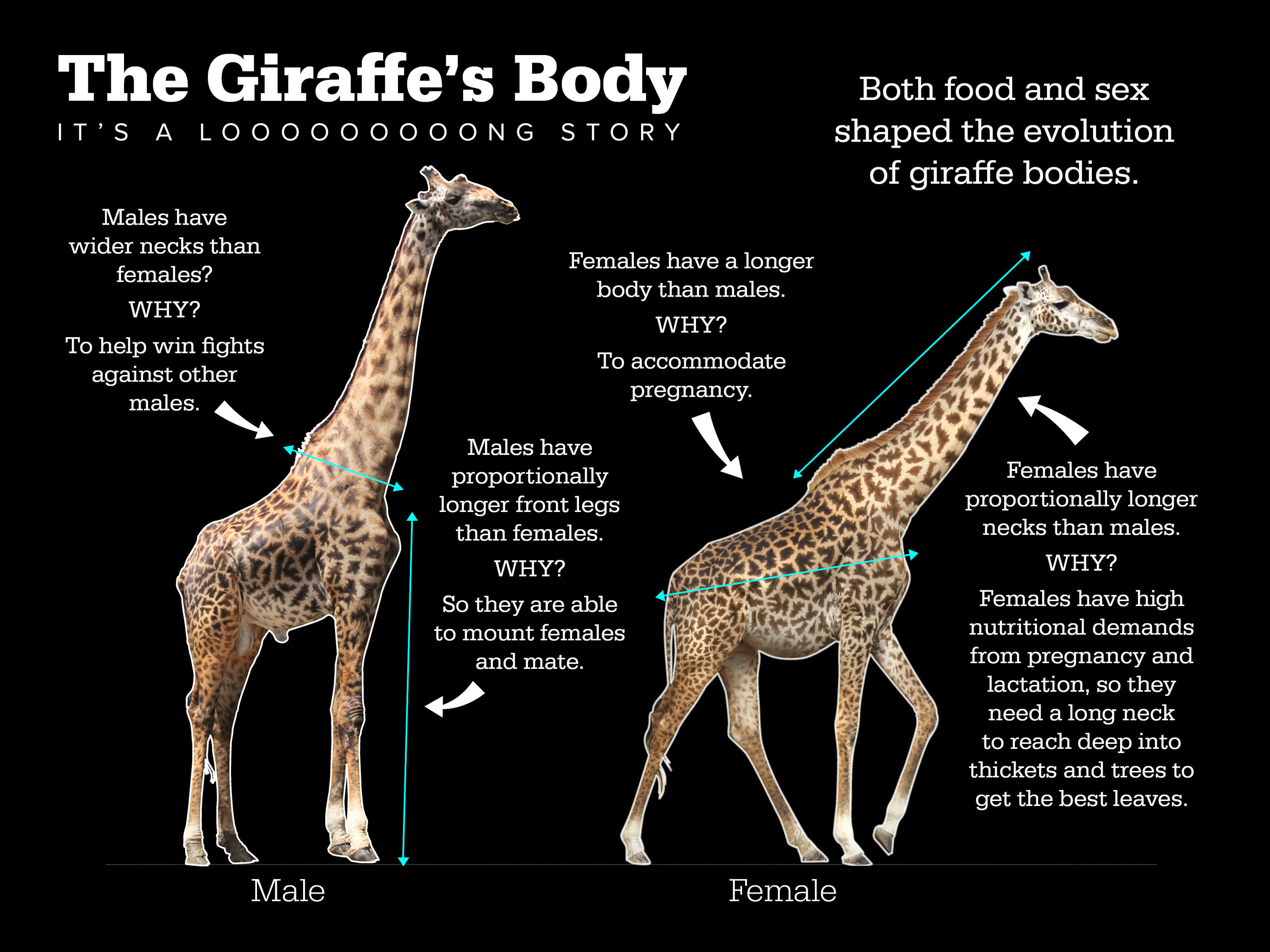The reason for giraffes’ iconic long necks has been revealed, and it turns out food was the original driver after all, just as Darwin thought. However, the alternative explanation, that it was about male sexual competition, gets a compensatory prize, having modified the shape of male giraffes’ necks.
Giraffes’ remarkable necks are not only their most notable feature, they’re among the most distinctive features in the entire animal kingdom. Sauropods once possessed something similar, but today there is just nothing else like that gap between head and body. Naturally, it’s something biologists are keen to explain.
Unfortunately, when a species’ trait serves multiple purposes, it can be hard to work out which provided the initial impetus. Darwin speculated that giraffes developed their long necks to access tree leaves no other species could. In a classic demonstration of how natural selection worked he, inspired by observations of giant tortoises, thought the proto-giraffe with the longest neck could reach more leaves than others, and became more likely to survive and pass on traits.
However, there is an alternative explanation, known as the necks-for-sex hypothesis. Not an offer from a hot but transactional vampire, necks-for-sex proposes that male giraffes developed long necks as weapons. In some species where one sex evolves a characteristic for evolutionary purposes, the other inherits it too, although usually to a lesser extent, because it’s simply easier to have more commonality. Steven Jay Gould proposed this as an explanation for the old question of why men have nipples. More recently, we have seen that the enormous noses male proboscis monkeys developed to woo mates have partially transferred to their female offspring.
Since transfer between sexes is seldom absolute, Professor Doug Cavener of Penn State University and colleagues realized that comparisons between male and female giraffes could probably settle the question. “The necks-for-sex hypothesis predicted that males would have longer necks than females,” Cavener said in a statement.
Male giraffes are 30 percent larger than females, making everything bigger, neck included. However, the team used publicly available photos of Masai giraffes (Giraffa tippelskirchi) in captivity and the wild to measure males’ and females’ relative dimensions.
Using the pedigree, and therefore ages, of captive giraffes the team were able to establish that at birth giraffe proportions are not affected by sex. Males grow faster, but it’s only around sexual maturity that significant differences can be seen.
Careful observations revealed that, relative to overall body size, female giraffes have longer necks, making the necks-for-sex hypothesis very unlikely. Instead, the team think it was the need for food of females that are almost constantly pregnant or nursing once they achieve sexual maturity, which drove the extraordinary neck extension. “Giraffes are picky eaters – they eat the leaves of only a few tree species, and longer necks allow them to reach deeper into the trees to get the leaves no one else can,” Cavener said.
Males do have wider necks than females, and the team think this represents an advantage when they slam their necks against those of rivals. Future research will test the suspicion that males with wider necks father more offspring. Males also have longer forelegs.
Besides the neck-to-body ratio, the study also revealed some other differences in male and female giraffe body shape.
The team noticed an intriguing difference between wild and captive giraffes. The wild giraffes displayed a fairly strict sexual binary, but among captive male giraffes, 15 percent were observed to have dimensions that don’t match the typical male body plan. “We speculate that body proportion sexual dimorphisms are maintained in the wild by natural and/or sexual selection, but in captivity selection is relaxed resulting in a higher occurrence of discordances in sexual phenotypes,” the authors write. No need for a thicker neck when zookeepers play matchmaker for you.
The work is not merely a way of settling long-standing debates, it could be crucial to the animals’ survival. Last year, Cavener showed Masai giraffes are more endangered than previously realized. Poaching is part of that, but habitat loss is probably a bigger factor. “If female foraging is driving this iconic trait as we suspect, it really highlights the importance of conserving their dwindling habitat,” Cavener said.
The study is open access in Mammalian Biology.
Source Link: We’ve Learned Why Giraffes Stick Their Necks Out – And It’s Not For Sex
